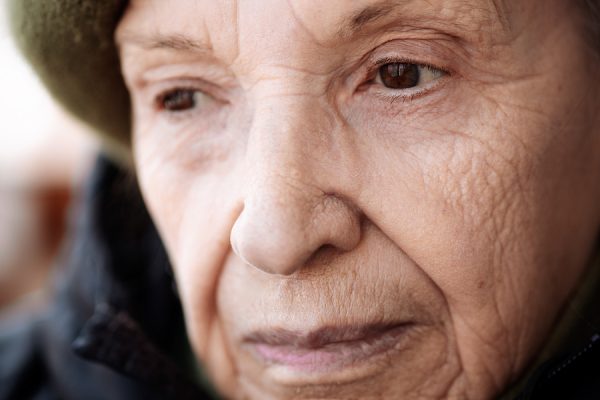As we age, we often find ourselves less socially active than we were when we were younger. Family and friends who have been bedrocks in our lives have passed away. Our adult children are busy with their own lives. Connections with our remaining friends dwindle.
It’s depressing to think about. And it can leave us vulnerable to feelings of loneliness and isolation that can lead us to sedentary behavior. That’s not good for anyone.
These behaviors are all associated with poor health outcomes and early death.
Isolation, loneliness and inactivity are all linked to an increased risk of high blood pressure, heart disease, stroke and type 2 diabetes. They are also three of the key ingredients for the development of dementia.
On the other hand, people who remain active as they age – who have a sense of purpose, engage in meaningful activities and interact with the community – tend live longer and healthier lives, with all of their mental faculties intact!
Create a Lively Lifestyle for Yourself
Some individuals can be surrounded by other people and still feel they are all alone. Others feel lonely because they don’t have enough of a social support network. Even others have suffered the loss of a close friend or family member, which leaves them feeling emotionally lonely.
So what works for one lonely person doesn’t necessarily work for another. But over the years I’ve discovered a few simple solutions that seem to offer the best results, depending upon the individual.
Put family and friends first. Spend time visiting friends and family. Schedule dates for lunch or dinner. Invite them to movies, art shows, sporting events (pickle ball anyone?) and other local events that you can enjoy together. Join them in things as simple as walking in the park, visiting the local farmer’s market or just shooting the breeze at the kitchen table.
Spend time doing things that matter the most to you. One of the easiest ways to feel like you are part of a group is to join like-minded people in the pursuit of a common goal. Invest your time in volunteer work that is important to you. Hospitals, food banks, churches, animal shelters and disaster relief groups can all use your help.
Or, spend time doing something that interests you. If you’ve always wanted to take up acting, join a theater group. If gardening is something that sounds appealing, connect with a local gardening club. If you’ve always dreamed of being an artist, sign up for art classes. The possibilities are endless!
Just get involved in whatever it is that gives you purpose, keeps you active and helps you stay involved with others.
Make physical activity a social event. Everyone needs plenty of physical movement. And it can be the perfect platform for social interaction, camaraderie and the development of new friendships. There are all kinds of physical activities that connect you with other people… yoga, tai chi, ballroom dancing, golfing and bowling are just a few activities that can all help you build strong bonds with others.
If you like animals, consider adopting a pet. They offer unconditional love, loyalty and companionship that can’t be beat. And they can really provide you with a sense of purpose.
Plus, dogs, in particular, can increase social interactions and reduce sedentary behavior. That’s because they require walking. And when you’re walking a friendly canine, everyone wants to stop and say hello. (Plus, if you sign up for dog-training classes, there are even more friendly folks to meet.)
Fight Loneliness and Boost Brainpower with Intellectual Stimulation
Even if you’re pretty involved with social activities, you might find yourself feeling lonely when you’re on your own.
However there are things you can do not only to keep yourself occupied, but also to help reduce your chances of dementia.
In a new study, researchers tracked nearly 147,000 older adults to identify any connections between sedentary activity, physical activity and dementia in older adults. And it turns out that what older people do when they’re sitting around the house can make a big difference in risk.
After an average of nearly 12 years they found that – regardless of physical activity – people who participated in active behaviors (like working on the computer) had a decrease in the risk of dementia. But passive behaviors (like watching TV) increased the risk.
In other words, people who aren’t exercising their brains – who are “intellectually sedentary” – have a higher chance of developing dementia, even if they exercise their bodies!
The study also noted that while long periods of sitting reduces blood flow to the brain, the greater intellectual stimulation from active behaviors may offset that.
This is great news and supports the idea that working puzzles, playing strategy games and enjoying brain-teasers in your downtime reduces dementia risk. And while you’re racking your brain to solve them, your mind will be so engaged that it won’t have time to feel lonely!
SOURCES:
Hawkley, L.C. Loneliness and health. Nat Rev Dis Primers. 2021;(8): 22.
Park JH, Moon JH, Kim HJ, Kong MH, Oh YH. Sedentary Lifestyle: Overview of Updated Evidence of Potential Health Risks. Korean J Fam Med. 2020 Nov;41(6):365-373.
Hartman YAW, Karssemeijer EGA, van Diepen LAM, Olde Rikkert MGM, Thijssen DHJ. Dementia Patients Are More Sedentary and Less Physically Active than Age- and Sex-Matched Cognitively Healthy Older Adults. Dement Geriatr Cogn Disord. 2018;46(1-2):81-89.
Raichlen DA, Klimentidis YC, Sayre MK, et al. Leisure-time sedentary behaviors are differentially associated with all-cause dementia regardless of engagement in physical activity. Proceedings of the National Academy of Sciences of the United States of America. 2022 Aug;119(35):e2206931119.
Stanley IH, Conwell Y, Bowen C, Van Orden KA. Pet ownership may attenuate loneliness among older adult primary care patients who live alone. Aging Ment Health. 2014;18(3):394-9.



